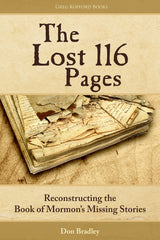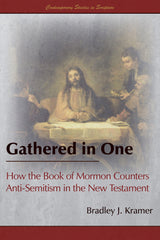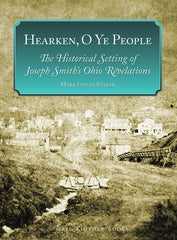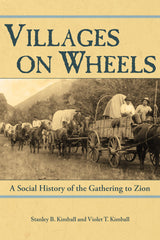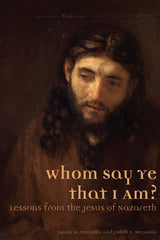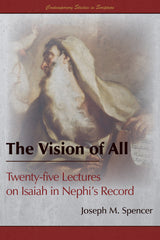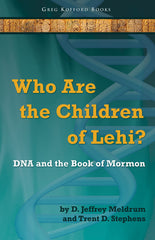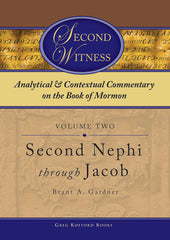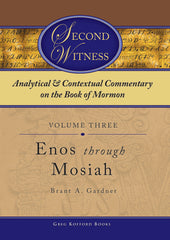News
New Year's Ebook Flash Sale December 27 2021
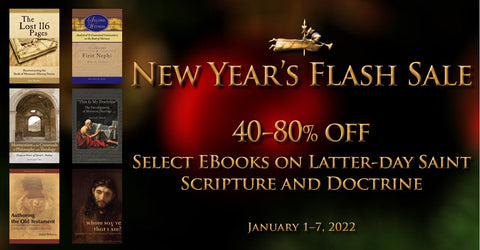
As we welcome 2022, we are pleased to offer discounted prices on select ebooks on scripture and doctrine. This sale runs from January 1–7 and is available for Kindle and Apple ebooks.
Sale ends Friday, Jan 7.
|
|
Scripture |
|
|
$27.99 |
$29.99 |
$29.99 |
|
$29.99 |
$29.99 |
$29.99 |
|
$29.99 |
$22.99 |
|
|
$18.99 |
$25.99 |
$27.99 |
|
$17.99 |
$20.99 |
$17.99 |
|
$22.99 |
$9.99 |
|
|
$22.99 |
$23.99 |
|
|
|
Doctrine |
|
|
$16.99 |
$16.99 |
|
|
$23.99 |
$23.99 |
|
|
$22.99 |
$9.99 |
|
|
$16.99 |
$22.99 |
|
|
$18.99 |
$22.99 |
Q&A with Joseph M. Spencer, author of The Anatomy of Book of Mormon Theology November 14 2021
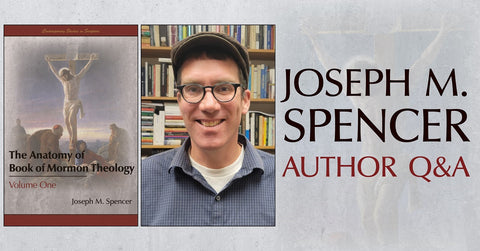
Joseph M. Spencer, November 2021
Q&A with Trevan G. Hatch, co-editor of "The Learning of the Jews": What Latter-day Saints Can Learn from Jewish Religious Experience August 03 2021
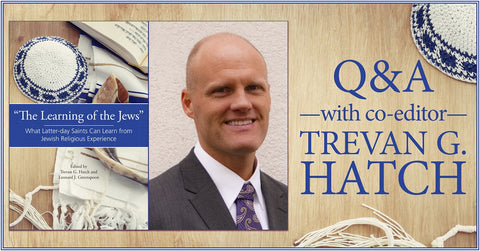
Q: Can you provide a little background about the editors and your decision to do this project together?
A: I participated with Leonard Greenspoon in several Jewish Studies seminars in Chicago from 2012 to 2018. In 2016 I approached him about getting Jewish scholars and LDS scholars together for this writing project. As a prolific scholar in Bible and Jewish Studies for forty years, Leonard has participated in these types of interfaith interactions many times, but never with Latter-day Saints. Leonard and I then contacted several scholars to participate. Many of the Jewish scholars were excited to write essays due to the unique nature of the project.
Q: What makes this book unique among interfaith dialogues?
A: Traditional interfaith dialogues are very common. So why do I call this project “unique”? Customarily, the purpose of interfaith dialogue is for two groups to come together and discuss commonalities. The “Kumbaya” nature of these interfaith dialogues serve to foster understanding and empathy. This project is unique because we did NOT want to follow the typical style of each group learning from each other. In other words, we did not want to tell Jews that Latter-day Saints want to learn from them, but that they must learn from Latter-day Saints as well. Christians have forced Jews for 1,500 years to learn about Christianity (or even convert to Christianity). In this volume, we sought to give Jews “the microphone” so-to-speak and let them talk about their own experience without imposing an agenda on them. Our intent was to discuss and examine Judaism on Jewish terms (as best we can) and subsequently wrestle with how Latter-day Saints might benefit from 3,000 years of the Jewish experience. Our purpose is not to suggest that Latter-day Saints must adopt various Jewish practices and beliefs. Rather, we hoped that the discussions in this volume may assist readers in adopting strategies, mentalities, and approaches to religious and cultural living as exemplified by Jews and Judaism. The chapters are meant to serve as catalysts for further introspection and learning, not as the end-all-be-all for how Latter-day Saints might learn from Jewish religious experience.
Q: How is this book organized?
A: This volume brings together fifteen scholars, seven Jewish and eight Latter-day Saint, with a combined academic experience of over four hundred years. We have structured the volume around seven major topics, two chapters on each topic. A Jewish scholar first discusses the topic broadly vis-à-vis Judaism, followed by a response from a Latter-day Saint scholar. These Latter-day Saint scholars are trained in various fields of study and disciplines including history, sociology, family studies, religious studies, biblical studies, and literature. This wide array of experience and training illustrates the various approaches and perspectives of learning from another group. With the primary purpose of this volume being for Latter-day Saints to learn from Jewish religious perspectives and experiences, the essays are generally different from what you might expect in an interreligious dialogue. For the most part, the Jewish essays were not written with Latter-day Saints in mind but are simply broad overviews that could be helpful for any non-Jewish readership. Likewise, the Latter-day Saint responses are not trying to find commonalities as the primary goal; rather, their purpose is to explore any strategies, mentalities, motives, etc., of Jews that might serve as a catalyst for Latter-day Saints to look introspectively and enhance their own lived religious experience.
Q: Can you highlight some of the main topics discussed in the book?
A: The seven topics include scripture, authority, prayer, women and modernity, remembrance, particularity, and humor. Most of these topics are salient in Jewish discourse today. It so happens that Latter-day Saints focus on several of these topics with a great amount of zeal, especially scripture, authority, prayer, and women & modernity.
Q: What are you hoping that readers will take away from this book?
A: We hope that the reader will not only learn a great deal about Judaism and the Jewish experience while reading this volume, but also use what they learn to enhance their own cultural and religious experience.
Trevan Hatch, August 2021
New Year's Ebook Flash Sale December 29 2020

As we welcome 2021, we are pleased to offer discounted prices on select ebooks on scripture, doctrine, and community. This sale runs from January 1–4 and is available for both Kindle and Apple ebooks.
Sale ends Monday, Jan 4.
Doctrine| Scripture | ||
|
$17.99 |
$27.99 |
$22.99 |
|
$18.99 |
$22.99 |
$23.99 |
| Doctrine | ||
|
$30.99 |
$17.99 |
$9.99 |
|
$26.99 |
$16.99 |
$18.99 |
| Community | ||
|
$18.99 |
$14.99 |
$18.99 |
|
$23.99 |
$18.99 |
$9.99 |
2020 Holiday Gift Guide November 11 2020
This holiday season, we are focusing on themes of scripture, doctrine, and community. Below is a holiday buyer's guide highlighting a few of our most popular titles.
To see our Black Friday Sales, click here.
Scripture
 |
With the Doctrine & Covenants being the 2021 focus for Come Follow Me, Mark Lyman Staker's award-winning history, Hearken, O Ye People, is the perfect gift for those interested in the historical context behind the revelations Joseph Smith received in Ohio. A perfect compliment to your Come Follow Me study. |
 |
One of our most popular titles! The Lost 116 Pages does more than tell the history behind the missing manuscript pages from the early translation of the Book of Mormon, it also uses the best scholarly tools available to analyze internal and external evidence and piece together what may have been in the lost pages. The result tells us as much about the existing Book of Mormon as it does the lost pages. Perfect for those who enjoy taking deep dives into scripture and history! |
 |
Award-winning Book of Mormon scholar, Brant Gardner, looks at Joseph Smith's translation process of the Book of Mormon. The Gift and Power analyzes not only the mechanics of the translation process, but also asks how closely Joseph Smith followed the original Nephite writings. This is the perfect book for those interested in how the Book of Mormon was produced, affirming that it is an ancient text miraculously brought forth by the gift and power of God. |
 |
The Second Witness series by Brant Gardner is lauded as the most comprehensive Book of Mormon commentary in existence. Brant uses his extensive knoweledge and backgroud into Mesoamerican anthropology and intertextual studies to bring the Book of Mormon to life for modern readers. Second Witness can be purchased as a set or individual volumes. A must have for the serious student of the Book of Mormon. |
 |
Authoring the Old Testament launched our Contemporary Studies in Scripture series, which utilizes the best tools of biblical scholarship to speak to a Latter-day Saint audience. Authoring the Old Testament introduces Latter-day Saint readers to the documentary hypothesis and offers a faith-affirming approach to Hebrew Bible authorship in line with contemporary scholarship. |
 |
Continuing with the Contemporary Studies in Scripture series, The Vision of All by Joseph Spencer has been a consistent top seller. The Vision of All analyzis Nephi's use of Isaiah writings in the Book of Mormon, offering a reader-friendly explanation of these challenging prophetic passages. Perfect for readers who want to understand more about Isaiah's writings as well as Nephi's inclusion of them in the Book of Mormon. |
Doctrine
 |
Blake T. Ostler's Exploring Mormon Thought series is the first series ever published by Greg Kofford Books and is still considerd the standard by which faith-affirming Latter-day Saint philosophy is measured. For readers interested in deep philosophical questions regarding the nature of God, human agency, mankind's divine potential, and the problem of evil and suffering in the world, this is the series to get! |
 |
Perhaps of all questions asked about Latter-day Saint doctrine and history, the historic practice of plural marriage is the most divisive. Brian C. Hales's Joseph Smith's Polygamy series is the most in-depth source of research avaiable on the origins of polygamy. Joseph Smith's Polygamy: Toward a Better Understanding, condenses this research into a reader-friendly format. This is essential reading for those who want to better understand the topic of plural marriage while affirming their belief in Joseph Smith's prophetic calling. |
 |
In For Zion, Joseph M. Spencer, assistant professor of ancient scripture at Brigham Young University, picks up where Hugh Nibley's Approaching Zion left off. In this approachable and inspiring text, Joseph expands the concept of consecration beyond the material and economic into one of transformation of the human heart. An excellent book for those who enjoy Latter-day Saint teachings about the promise of Zion and the writings of High Nibley. |
 |
Considered a classic examination of Latter-day Saint doctrine by many, This is My Doctrine by Charles R. Harrell looks closely at the development of key Latter-day Saint teachings and the ongoing conversation between ancient belief and modern-day revelation. This book challenges its readers to see God's hand at work in the evolving nature of doctrine. The perfect book for those who enjoy studying Latter-day Saint doctrine and belief. |
Community
| One of our most popular titles, Bridges by David B. Ostler, speaks to faithful members about the topic of faith crisis. The book takes an empathetic approach, teaching its readers how to build bridges of compassion and understanding with those whose faith has been challenged by historical or social issues within the Church. Read widely by teachers of Church Seminaries and Institutes, Bridges is a must-have for anyone who knows of family members, friends, or ward members who struggle with faith. | |
 |
Miracles Among the Rubble by Carol R. Gray is one of the most loved books by reviewers. In heart-wrenching and inspiring chapters, written with her poetically unique style of expression, Carol shares her experiences of organizing and transporting relief aid for victims of the Balkan War during the early 1990s. Her stories are a testament to the extraordinary achievements of an ordinary mother, who was able to do remarkable things with nothing more than unwavering faith, the help and guidance of the Holy Ghost, and her relationship with the Savior. |
 |
A best-seller, Women at Church by Neylan McBaine has been passed along to numerous local ward and stake leaders who seek ways to more fully include women at the local level. This eye-opening book is perfect for anyone who would like to better understand why many Latter-day Saint women feel marginalized in church settings and what can be done to improve women's visibility and voices in wards and stakes without challenging current doctrine or policies. |
 |
Whom Say Ye That I Am? by James and Judith McConkie utilyzes up-to-date historical scholarship to explore Jesus in the context of first-century Palestine and Jewish culture. This book helps Latter-day Saint readers better understand the life and ministry of Jesus of Nazareth, and how he responded to social institutions and issues in his day, all of which is still relevant to a modern audience. Perfect for readers who enjoy historical Jesus scholarship. |
 |
Although united in faith, members of The Church of Jesus Christ of Latter-day Saints are diverse in their cultural, social, and political perspectives. Common Ground—Different Opinions offers a collection of essays on varying topics from same-sex attraction, femisim, and race, to political partisanship, war, human evolution, and more. This is the perfect book for readers who like to carefully consider arguments from both sides of complex social issues in a ways that maintain civility, respect towards faith, and commitment to the Church. |
 |
The Garden of Enid Vols. 1 and 2 collect Scott Hales's much-loved coming-of-age comic series about fictional teenager, Enid Gardner, as she explores her faith and questions in light of personal and cultural challenges. Funny, charming, sincere, and moving, The Garden of Enid is perfect for teens or anyone who remembers what it was like to be an akward teenager wondering where they fit into the world and the Gospel. |
Q&A with Blake T. Ostler, author of Exploring Mormon Thought, Vol 4: God's Plan to Heal Evil October 23 2020

Q: For those unfamiliar with the Exploring Mormon Thought series, can you give us a general overview of the previous volumes?
A: Exploring Mormon Thought is an exploration of the philosophical and theological implications of various views entertained in the Mormon tradition. The first volume, The Attributes of God, addresses the attributes of God from a Mormon perspective. I argue that God cannot know what acts a person will freely do in the future. I also assesse the attributes of divine power, divine mutability, divine pathos (or emotions and feelings), divine temporality, and human and divine nature. The first volume also expounds a Mormon Christology or theory of Christ as both fully human and fully divine at once.
The second volume, The Love of God and the Problems of Theism, addresses Mormon soteriology or theory of salvation. I address whether God's love can be properly called "unconditional" in Mormon thought. I also address the problems of petitionary prayer—why would we ask God to do anything when God is already committed to doing what is best and knows far better than we do what is good for us? I develop a theory of ethics based upon a modified agape (love) theory of ethics and address and critique salvation by grace and predestination in classic Christian thought.
The third volume, Of God and Gods, addresses the relation of the Israelite council of gods, the early Christian view of the Godhead and the angel of Yahweh, and finally analyzes the Mormon view of the Godhead as a social trinity that reconciles these views.
Q: The fourth volume is titled God’s Plan to Heal Evil. Can you briefly describe what you mean by that?
A: In the 4th volume I review numerous approaches within the traditional Judeo-Christian-Muslim theism to the kinds of moral and natural evils that plague us. In light of these attempts to explain how evil is consistent with God's existence, I present at length an explanation of how God's purposes for us—framed within what Mormons call "The Plan of Salvation"—places our experience of evil into a context that not merely justifies God's permission of evil (a standard theodicy) but how evil functions in our lives to fulfill God's plan. The answer to the problem of evil is not as much a defense of God, but an insight into how evil works to refine us and give us the opportunity to learn to love in the way that God loves us, and in so doing to heal the evil so that it serves a redemptive purpose.
Q: Can you give us a brief overview of how this volume is organized?
A: The 4th volume begins by looking at what I consider to be the best responses to the argument from evil against God's existence. I conclude that the fact of the amounts and kinds of evil that we experience show that the omni-God in the Calvinistic and Molinist traditions does not exist. I then look at Open Theism and present a new argument based on the option that God had to create virtually omniscient creatures that Open Theism cannot answer. I then develop finitist and process theodicies based on views held in the Mormon tradition and conclude that they are live options but are not persuasive. I then present a view of God's purposely using evil as a part of his plan to achieve His purposes to bring us to the status that we can love as He does and to be fit for a relationship with the persons of the Godhead that fully deifies us.
Q: For readers unfamiliar with the problem of evil from a philosophical perspective, can you briefly explain it
A: The problem is evil is both a philosophical and an existential problem. How can we believe that God exists when such belief entails that God is all powerful and therefore can have a world without evil, is all-good and therefore desires a world without evil, and we are then led to ask: why is there evil? The further question arises that even if we could show that belief in God is logically consistent with the fact of evil, how could we trust in God when he leaves us subject to evils like the Holocaust or murder, rape, and child abuse?
Q: Can you briefly describe the Christian theological frameworks you address in this volume?
A: I discuss the issue of evil from the perspective of those who believe in an all-controlling God (e.g. Calvinsts, on some interpretations Thomists and Muslims), a God who exercises meticulous providence or that can create any feasible world (e.g. Molinists and Open Theists), a limited God who is like a super-advanced scientist (Finitism), or a God who can influence everything but not unilaterally control anything (Process thought), and a God who can control whether there are natural laws but not what those natural laws shall be if He chooses to have an ordered world (the Relational Agape view of God).
Q: You argue in the fourth volume that a God who creates ex-nihilo does not exist. Can you give us a taste of your support for this argument?
A: If God creates ex nihilo (out of nothing) then He can have a world without moral evils and diseases and the best explanation for how that could be is that we do not have sufficient cognitive grasp to judge God's purposes. However, such a view entails that everything must be for the best and so we can just allow anything at all to happen and be satisfied that it is all for the best. Given such a view, personal moral decisions and acts are never necessary. But no Christian, Jew, or Muslim could accept that. Or, in the alternative, God could have created us virtually omniscient so that we could rid the world of many natural evils that occur such as infectious diseases. God's failure to do so shows that God is not all-good because He did not avail himself of morally superior options.
Q: Does Mormonism add anything new to the problem of evil?
A: Mormonism makes possible a view that God must work within a pre-existing natural framework that explains why God has to deal with just the kinds of natural laws and persons who actually exist and how we are not thrown into the world against our will and can consent to confront the kinds and amounts of evils that actually occur. Most importantly, Mormonism explains how confronting a world with the kinds and types of evils that actually occur is worth it in light of the fact that it is the only way to achieve the superlative and crowning good of participating fully in the relationship of loving divine unity—the greatest possible good. Mormonism provides a framework where evil can be the mentor of Gods by being redeemed through learning to love one another because we live in a challenging world.
Q: What are you hoping readers will gain from reading this volume?
A: A theodicy is an explanation of how it is possible that there is genuine evil in the world if there is a loving God. There are several live options for viewing God's permission of evil in the Mormon tradition. However, the Relational Agape theodicy suggests that the world is lovingly ordered to serve us to learn to be as God is by learning to love as God does. The world is not hostile to us but serves as an environment suited to mentoring gods. The people in our lives are loving angels who serve us, even when it appears that they are doing evil to us and it is really difficult to deal with them. The evils that we experience are a call to redeem evil by healing it through love—even (or especially) when it is gut-wrenching and doing so goes against our set human nature. The Agape theodicy is a recognition that love is the greatest power in the universe.
Blake T. Ostler
October 2020
FLASH SALE: Award-winning Latter-day Saint books — 30% off retail prices! September 23 2020

We are proud of our authors and books! Expand your collection of biographies and narrative histories, anthologies and personal essays, and scripture scholarship with these award-winning titles below. Now 30% off through the end of September.
Sale ends Wednesday, 9/30/2020*
|
2020 Best Biography, JWHA $24.95 |
2018 Best Anthology, JWHA $22.95 |
2017 Best International History, MHA $39.95 |
|
2016 Best Literary Criticism, AML $18.95 |
2016 Best Religious Non-fiction, AML $20.95 |
2016 Best Biography, JWHA $39.95 |
|
2015 Best Religious Non-fiction, AML $34.95 |
2015 Best Book Award, MHA $32.95 |
2015 Best International History, MHA $24.95 |
|
2014 Best Religious Non-fiction, AML $20.95 |
2014 Best International Book, MHA $34.95 |
2013 Best International History, MHA $29.95 |
|
2012 Best Biography, MHA $31.95 |
2012 Best Criticism Award, AML $34.95 |
2011 Best Book Award, MHA & JWHA $34.95 |
|
2007 Best Book Award, JWHA $31.95 |
2003 Best Biography, MHA $32.95 |
1988 Best Book Award, MHA $31.95 |
*For international print orders, email order@koffordbooks.com. Subject to available supply.
Church History and Doctrine Sale: 30% off Select Titles in Print and Ebook April 15 2020
Brush up on your studies of Latter-day Saint history and doctrine with informative and insightful research and explorations. Now 30% off for both print and ebook through Memorial Day.*
Sale ends Monday, 5/25/2020
|
$32.95 |
$34.95 |
$29.95 |
|
$32.95 |
$19.95 |
$31.95 |
|
$26.95 |
$24.95 |
$30.95 |
|
$31.95 |
$14.95 |
*For international print orders, email order@koffordbooks.com. Subject to available supply.
Spring Flash Sale: Up to 88% off Select Ebooks March 24 2020
Stay at home with a great book and help take the pressure off delivery services by going paperless. From now through Easter, download select ebook titles for 30% to 88% off regular price.
Sale ends Monday, 4/12/2020
****NOTE: Due to an error, the discounts for the Kindle ebooks of Second Witness volumes 5 and 6 were not applied. They should be available at the discounted rate by Sunday*****
Insightful messages on justice, mercy, hope, community, and inspiring outlooks on the future during these difficult times. Discounted right now to just $1.99 (up to 88% off regular retail price).
|
$9.95 |
$16.99 |
$16.99 |
The message of Jesus is one of hope and healing. Spend time contemplating the life and mission of the Savior with thought-provoking and inspiring scholarship. Discounted right now to 50% off regular retail price.
|
$23.99 |
$9.99 |

$22.99 |
The Book of Mormon proclaims another witness of the mission of Jesus Christ. Deepen your knowledge and understanding of this sacred book with studies that explore its text, history, and origins. Discounted right now to 30% off regular retail price.
|
$25.99 |
$17.99 |
$20.99 |
|
$22.99 |
$17.99 |
$27.99 |
|
$27.99 |
$22.99 |
$9.99 |
|
$29.99 |
$29.99 |
$29.99 |
|
$29.99 |
$29.99 |
|











